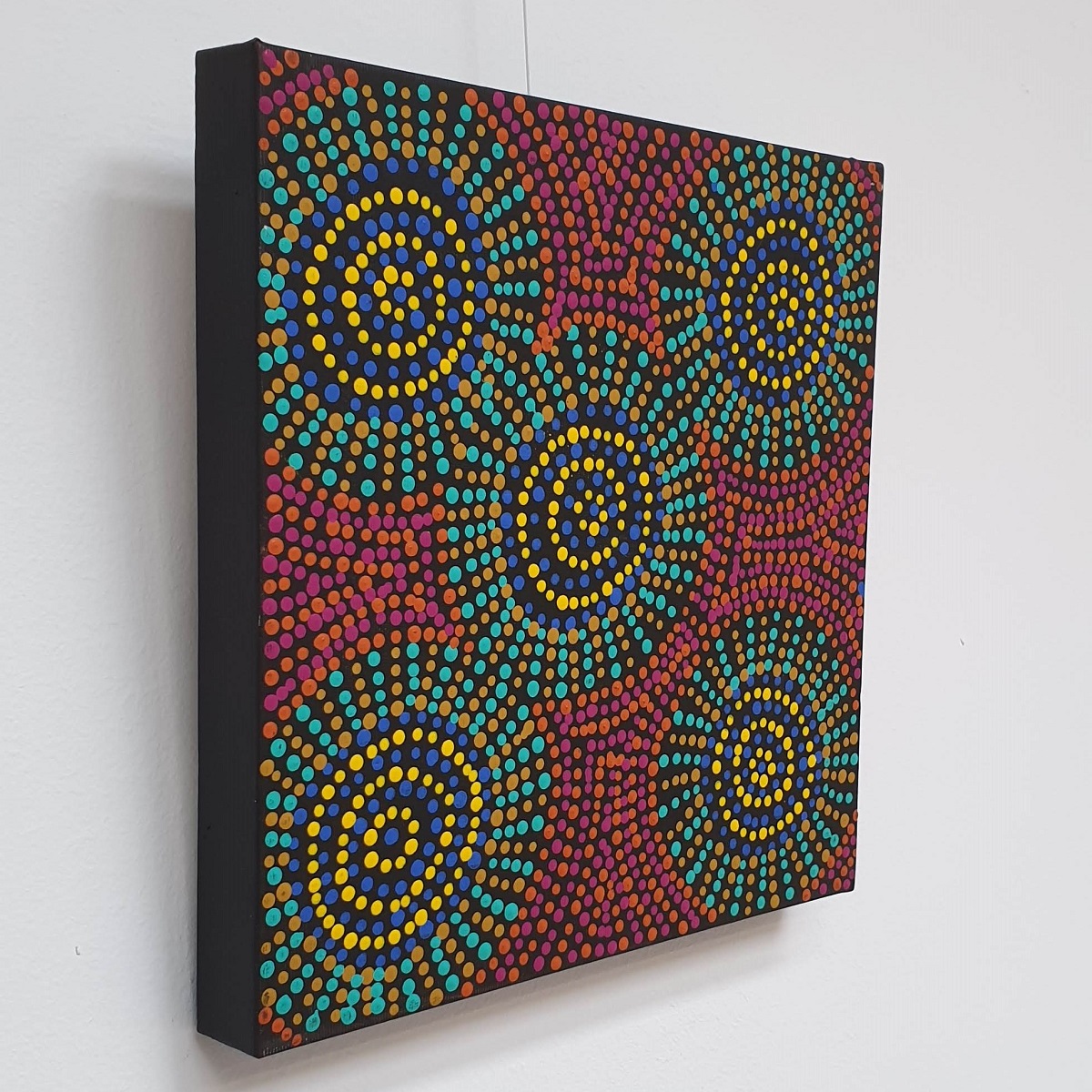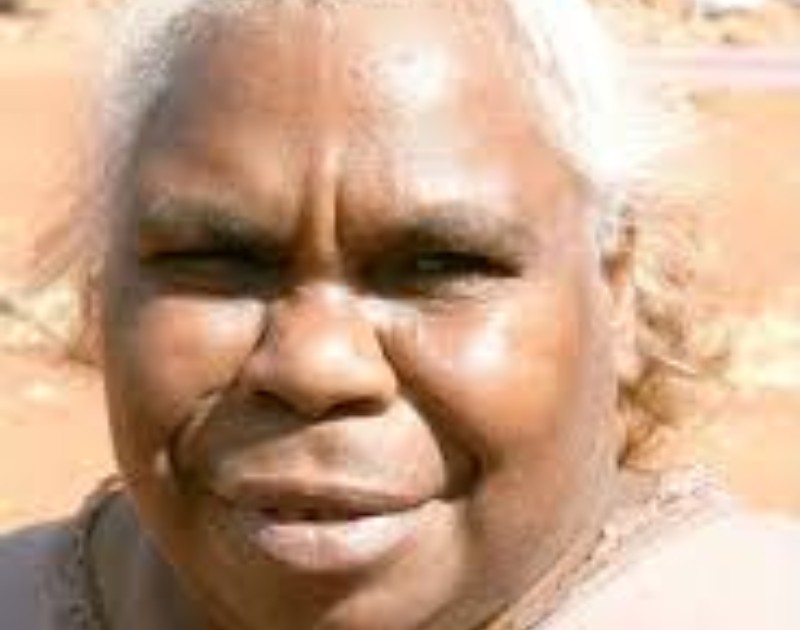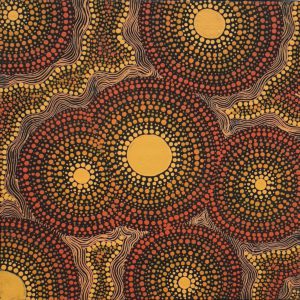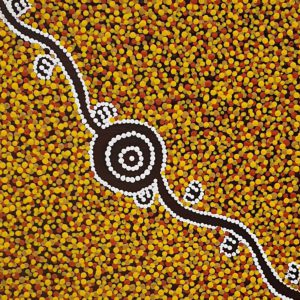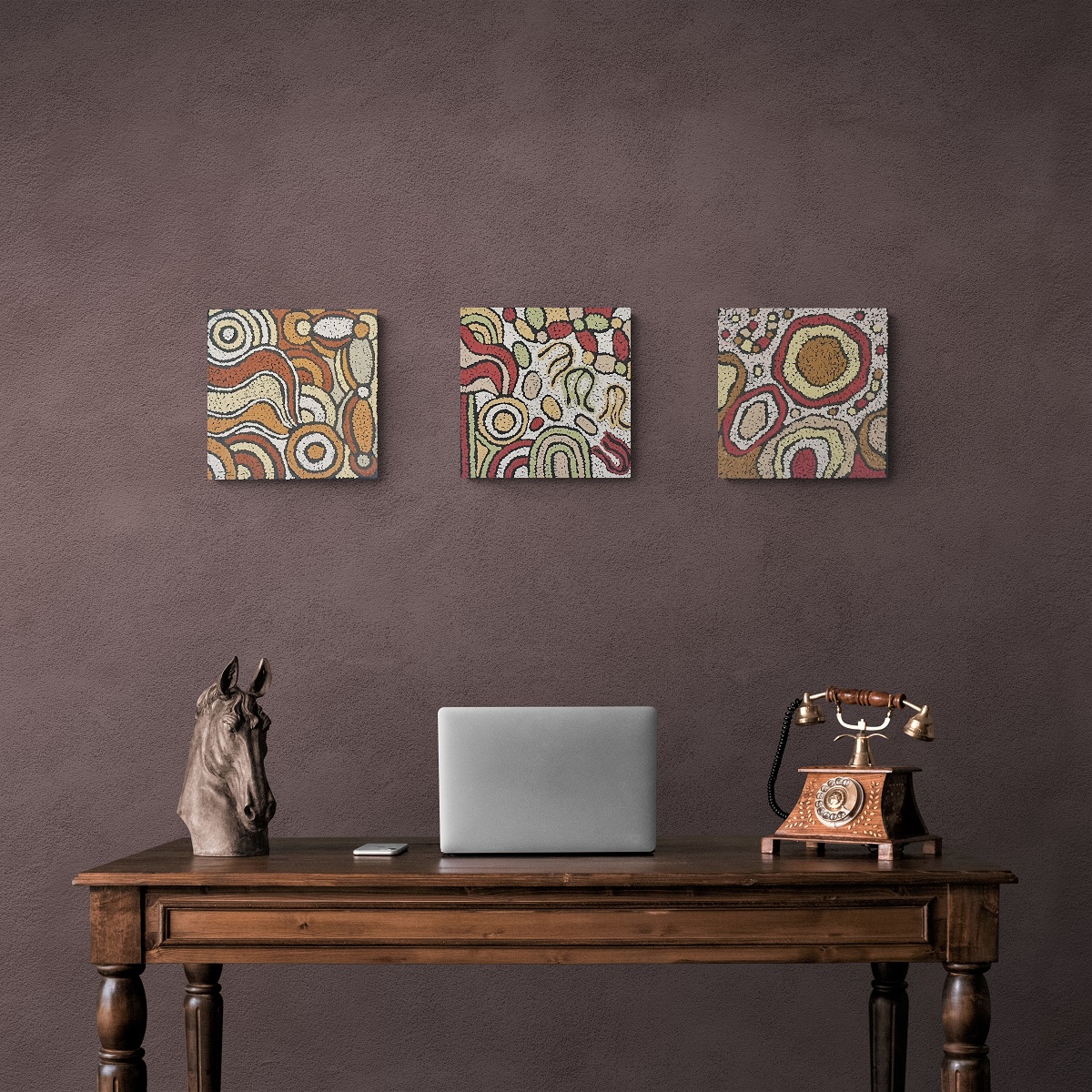Story
In this painting women of the Napanangka and Napangardi subsection are collecting ‘jinti-parnta’ (edible fungus) far to the west of Yuendumu at Karnta Karlangu, near to another place called Mina Mina. ‘Jinti-parnta’ is also known as native truffle and appears in the sandhills after the winter rains. The growing fungus forces the earth above it to crack, exposing it. Then, women collect it, squeezing out the juicie before cooking. Jinti-parnta is prepared by cooking in hot ashes. Ancestral women travelled north through Janyinki and other places, then to the east through to Alcoota country, while collecting ‘jinti-parnta’.




